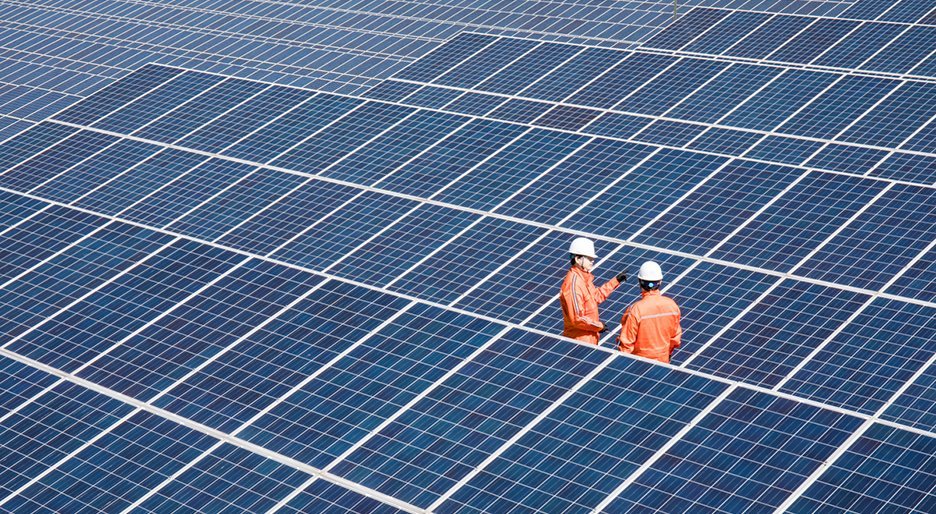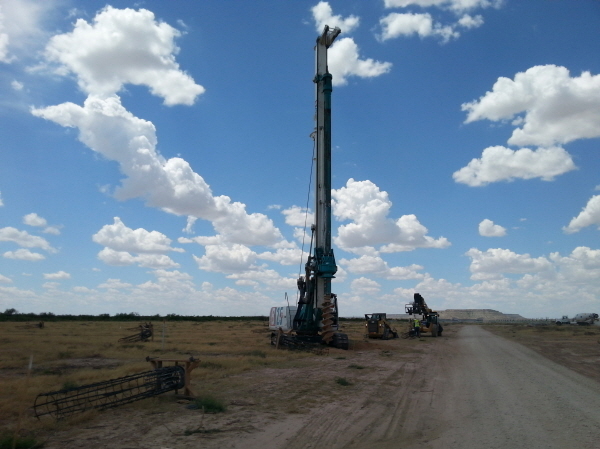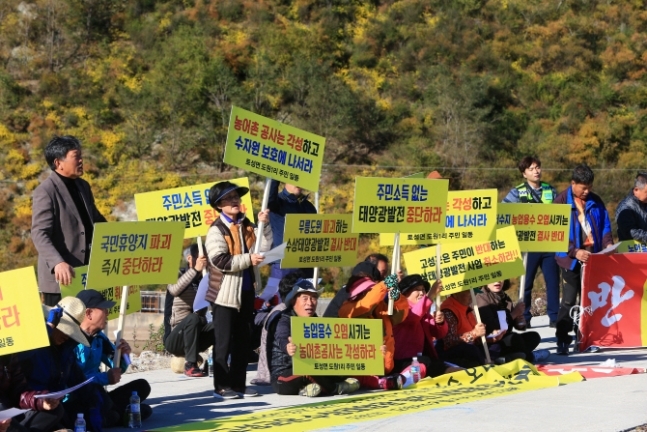[Going Renewable (5)] South Korea faces solar power dilemma
Solar firms grapple with supply glut in global market, heavy residential backlash
By Shin Ji-hyePublished : July 7, 2019 - 16:23
The Korea Herald is publishing a series of articles on the quest of South Korea’s government and businesses to switch to renewable energy. -- Ed.
Solar energy is among the keys in the Moon Jae-in administration’s push for renewable energy in response to concerns about life-threatening air pollution and demand for cleaner and safer energy.
In December 2017, the government announced “Renewable Energy 2030,” aiming to increase renewable energy’s share of generation capacity to 20 percent from the current 7 percent by 2030. Solar power accounts for 57 percent of the 20 percent of renewable energy.
The outlook for renewable energy is bright. Global demand for solar power is expected to grow from 94 gigawatts in 2017 to 125 gigawatts in 2020, according to research firm IHS Markit.
But despite Moon’s ambitious goal and market growth, Korean solar power companies face mounting challenges at home and abroad. They are grappling with cost-cutting competition from China, regulatory challenges and resistance from local residents.
Solar energy is among the keys in the Moon Jae-in administration’s push for renewable energy in response to concerns about life-threatening air pollution and demand for cleaner and safer energy.
In December 2017, the government announced “Renewable Energy 2030,” aiming to increase renewable energy’s share of generation capacity to 20 percent from the current 7 percent by 2030. Solar power accounts for 57 percent of the 20 percent of renewable energy.
The outlook for renewable energy is bright. Global demand for solar power is expected to grow from 94 gigawatts in 2017 to 125 gigawatts in 2020, according to research firm IHS Markit.
But despite Moon’s ambitious goal and market growth, Korean solar power companies face mounting challenges at home and abroad. They are grappling with cost-cutting competition from China, regulatory challenges and resistance from local residents.

Hard business
In May, Woongjin Energy, the nation’s last remaining producer of ingots and wafers for solar cells, filed for court receivership. The firm was the only survivor after many large companies, including LG, SKC and Hyundai Heavy Industries, had exited their ingots and wafers business due to a continued supply glut from China.
“We can no longer compete with Chinese rivals that keep down costs. We have already injected more than 100 billion won ($85.4 million) into the solar business since 2014. Now, we can’t afford it anymore,” said a spokesperson from Woongjin Group, parent company of the energy firm.
The continued oversupply from China has resulted in a plunge in solar product prices. The price of polysilicon, a key material for solar panels, fell to $9 per kilogram in April from $16 in the same month of last year. The cost of solar modules also dropped to $0.26 per watt in May from $0.40 per watt in the same month a year prior.
Another large solar firm, OCI, which produces polysilicon, saw losses for two straight quarters. The firm is predicted to continue to post losses in the second quarter of this year, according to local brokerage houses.

The firm’s credit rating was downgraded from A+/stable to A+/negative due to falling prices of polysilicon, said local credit rating agency Korea Investors Service last month.
Hanwha Chemical, which produces polysilicon and owns Hanwha Q Cells that produces solar cells and modules, barely turned a profit in the first quarter this year after losing money for years, despite a massive injection of funds from the group to grow its solar business.
Korean solar firms say high electric charges here make their products further less cost competitive.
“Electric charges account for 30 to 40 percent of production costs to make solar products. While Chinese firms are enjoying government subsidies and lower electric charges, Korean counterparts are not,” said a spokesperson at the Korea Photovoltaic Industry Association.
In March, Kim Chang-beom, vice chairman of Hanwha Chemical Corporation, which owns Hanwha Q Cells, told reporters following the shareholders meeting that the firm would not add new facilities of polysilicon in Korea. “Even if we have to add, we will do it overseas because of expensive electric charges in Korea.”
Lee Woo-hyun, a vice chairman of OCI, said it is challenging to afford electric charges that cost up to 300 billion won per year, commenting during a shareholders' meeting that the continued burden could lead to considering alternatives.
The government is aware of this concern. But it is not possible to give benefits to specific industries because of fairness issues, said Shim Jin-soo, chief of the Energy Ministry’s renewable energy division.
Resistance and regulations
The challenges of solar companies are not only global. Indeed, they suffer more at home.
Korea does not have perfect geographical features for generating renewable energy due to its abundance of mountains. To build solar panels, companies have to cut forests or damage farmland.

Building solar panels has triggered heavy residential backlash from residents, who say they compromise their quality of life. Plans of solar projects -- either by the public or private sector -- have often been withdrawn due to strong opposition from nearby residents.
Opposition lawmakers are raising their voices to strengthen regulations on renewable energy on the grounds of protecting residential areas and the environment.
According to Rep. Yoon Sang-jik from the Liberty Korea Party, the farmland used for solar power panel surged from 505.8 hectares in 2016 to 3,675 hectares last year. Also, 4,407 hectares of forest have been damaged -- 15 times area of Seoul’s Yeouido -- since 2017 when the government firmly pushed for solar power business.
Amid growing opposition from residents and lawmakers, the government has been seen tightening regulations on solar panel business since late last year. They are implementing stricter land policies and giving less benefits to renewable energy companies.
“Getting land approval for solar projects is becoming more difficult. Mountains and farmlands are not allowed to protect the environment. As for idle sites, they are also not approved to protect migratory birds,” said an executive of one of the solar power generators in Korea, speaking on condition of anonymity.
“We need land but don’t know where to build solar panels.”
Over the past year, requests for land approval for solar panels in the mountains markedly fell. Applications dropped from 762 in January and February last year to 40 in the same months of this year.
Such strict land policies will make it more difficult for local solar companies to gain references here, which are key to export competitiveness, said Lee So-young, vice president of local environmental civic group Solutions for Our Climate and a former attorney at Kim & Chang.
Kang Jung-wha, a senior researcher at the Export-Import Bank of Korea, said, “Sadly, the Korean solar industry faces mounting challenges difficult to address. The only way they can survive and weather challenges seems to be to develop more innovative and efficient technologies.”
By Shin Ji-hye (shinjh@heraldcorp.com)



















![[Today’s K-pop] BTS pop-up event to come to Seoul](http://res.heraldm.com/phpwas/restmb_idxmake.php?idx=642&simg=/content/image/2024/04/17/20240417050734_0.jpg&u=)